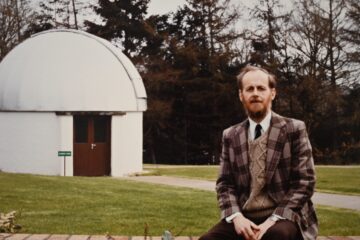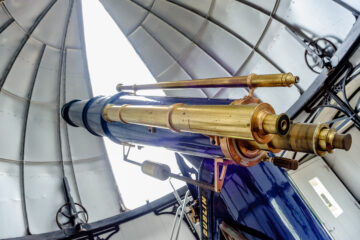Scientists track comet which has been in orbit for millions of years in another solar system
An international team of scientists led by Armagh Observatory and Planetarium astronomer, Dr Stefano Bagnulo has conducted ground-breaking research on a comet which has been in orbit for millions of years in another solar system.
Dr Bagnulo was supported in the research project by his colleagues at Armagh Observatory and Planetarium, Dr Apostolos Christou, Dr Galin Borisov and Dr Rok Nezic.
The research, which is published in highly respected science journal, Nature Communications, has been centred on the Comet 2I/Borisov which was discovered in August 2019 by astronomer Gennadiy Borisov from his private observatory in the Crimean Peninsula.

Credit:ESO/O. Hainaut
Borisov is one of only two objects, the other being asteroid 1I/`Oumuamua found in 2017, that scientists believe have come from another solar system. In other words, these two objects were probably born in orbit around a star different from our Sun.
In the months prior to the pandemic, Dr Bagnulo led scientists from Bulgaria, France, Italy, Spain, the UK and the US on research based on data collected at the European Southern Observatory’s 8-m Very Large Telescope (VLT) in Chile’s Atacama Desert.
From December 2019 to March 2020, the team used the VLT to study the polarisation of sunlight reflected from the cloud of dust, known as the coma, at the head of the comet.

Armagh Observatory and Planetarium astronomer, Dr Bagnulo said: “It is a privilege to have this paper published in Nature Communications as it underlines the world class research which is taking place here at Armagh Observatory.
“I was proud to lead such an exceptional team of scientists, not least my colleagues from Armagh who played such an important role in the research.
“We tracked the comet’s changing polarisation as it moved through the solar system. Polarisation is a property of the incoming light wave that is used to diagnose the characteristics of a solid surface or a particulate medium.
“One of our observations even took place on Christmas Day, and it made us smile to think here was a group of wise men tracking a great light in the sky.
“After collecting and analysing the data, it was found that polarised light from Borisov behaves in a unique way, unlike what we observe from most other bodies in the solar system.
“Indeed, the only object that comes close to Borisov in this respect turns out to be Hale-Bopp, a spectacular once-in-a-lifetime comet that graced earth’s skies in 1997.
“Although Hale Bopp is different from Borisov in that it almost definitely belongs to the solar system, it probably has approached the sun only once before, perhaps in the third millenium BC, the remainder of its existence having been spent in the cold space far from the sun and the other planets.
“This led our team to propose that the unique polarisation behaviour of Borisov is due to the extremely pristine condition of its surface, having spent millions of years near absolute zero in the space between the stars.
“As an interstellar comet, Borisov is so far a one-off, but the team expects more objects like it to be found in the foreseeable future, thanks to new, powerful survey facilities coming online, for instance the Vera C. Rubin Observatory capable of scanning the entire sky every few days.”
Credit:ESA/Space Engine (spaceengine.org)/L. Calçada. Music: Johan B. Monell
One of these future discoveries may come under scrutiny by Comet Interceptor, a deep-space mission by the European Space Agency expected to take place towards the end of the decade. Dr Bagnulo is already actively involved in the mission that scientist hope will give us our first close-up glimpse of an extrasolar body.
Click here to read the ESO release.



0 Comments